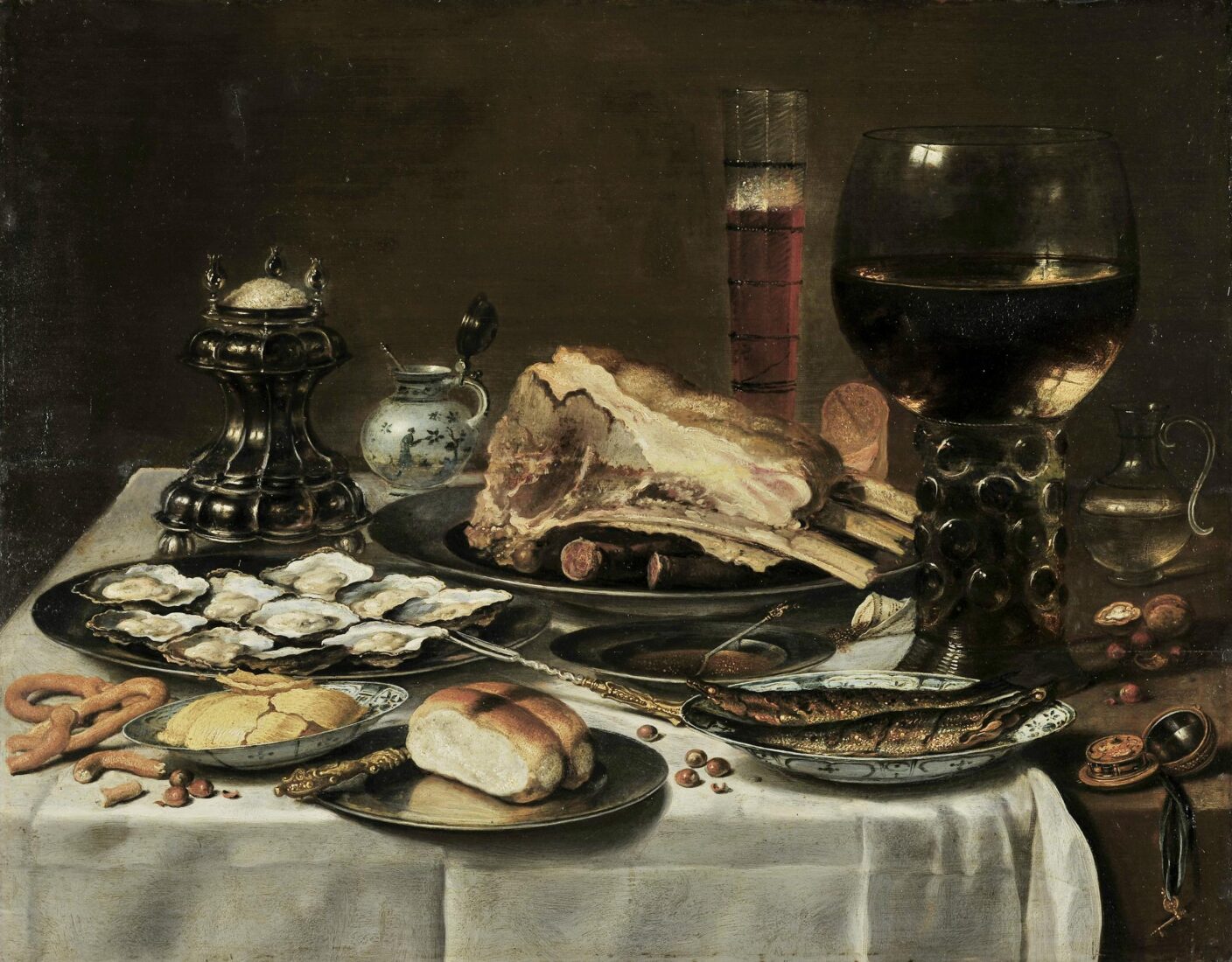We use cookies to make our site work properly, to personalize content and ads, to provide social media features and to analyze our traffic. We also share information about how you use our site with our social media, advertising and analytics partners. Read the Cookies Policy.

Heda Willem Claesz (1594 - c.1680)
Still Life with Meet, Oysters, Smoked Herring, Glass of Wine and Glass of Beer
Oil on panel, 68 x 88 cm
Ε. Koutlidis Foundation Collection
In spite of the fact that still-life painting was at the lower end of the hierarchy of painting genres as taught at the fine art academies that began to be established in the royal courts of Europe in the 17th century, the depiction of objects, flowers, fruits, game, breakfast tables was very popular during the 16th and 17th centuries, especially in the Netherlands. The work attributed to Willem Claesz. Heda reflects the monochromatic approach to still-life painting developed in Haarlem by Pieter Claesz (1597-1660) and Heda. It is a typical example of breakfast scenes with tables set in white cloths, on which a great variety of delicacies is served, which could be consumed as a light snack at any time of the day, surrounded by a wealth of tableware items. These works typically feature a detailed, realistic depiction of objects; textures are meticulously rendered, including various textiles, meat, oyster shell, liquids seen through transparent glass, or in a jug, as well as the reflections of the light on shiny metal, or glass. In spite of their sumptuous content, still-life paintings symbolized vanity, the end of existence, the fleeting nature of luxury. Most of them were allegorical representations of contemporary philosophical ideas and contained religious or teleological allusions.

